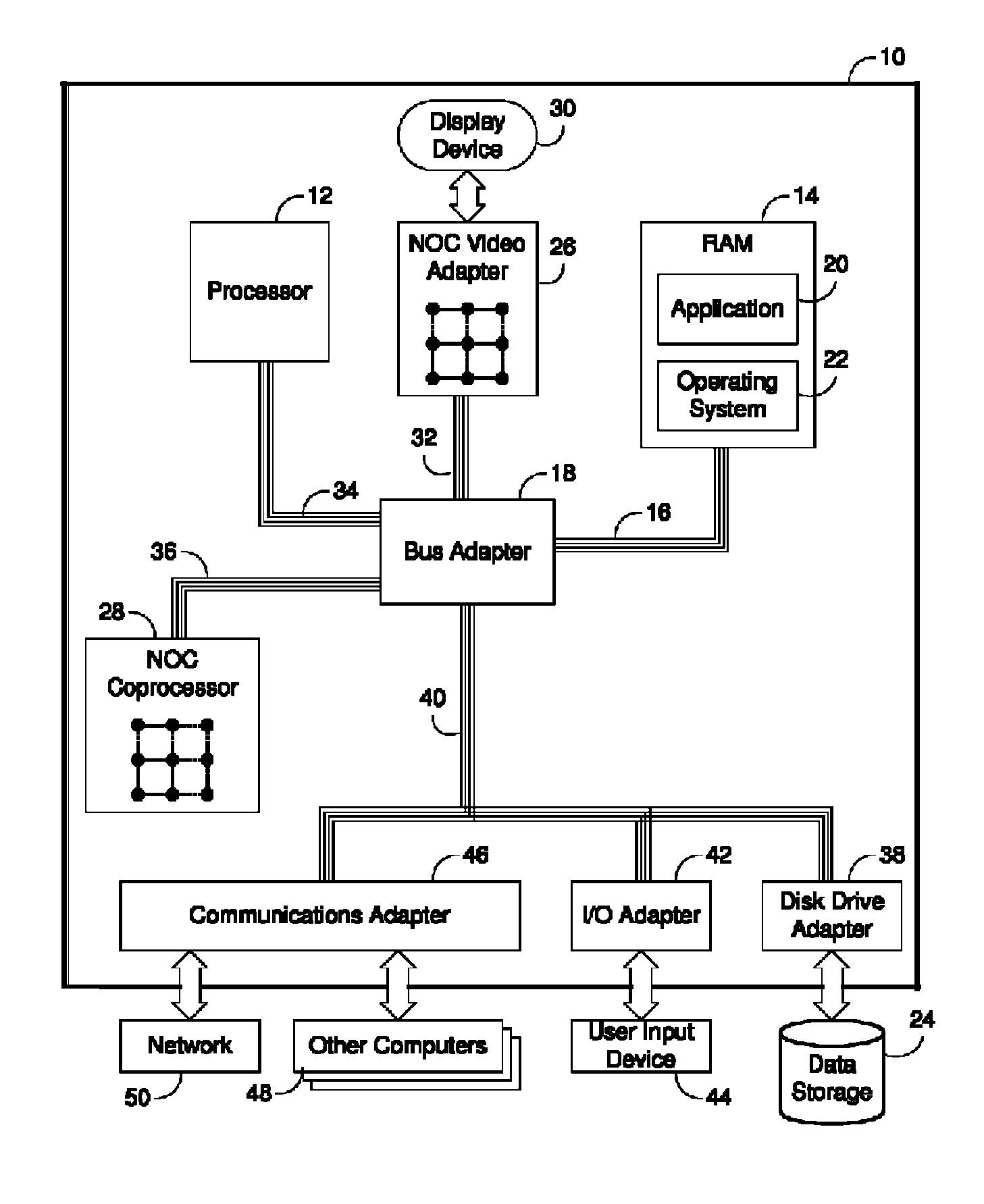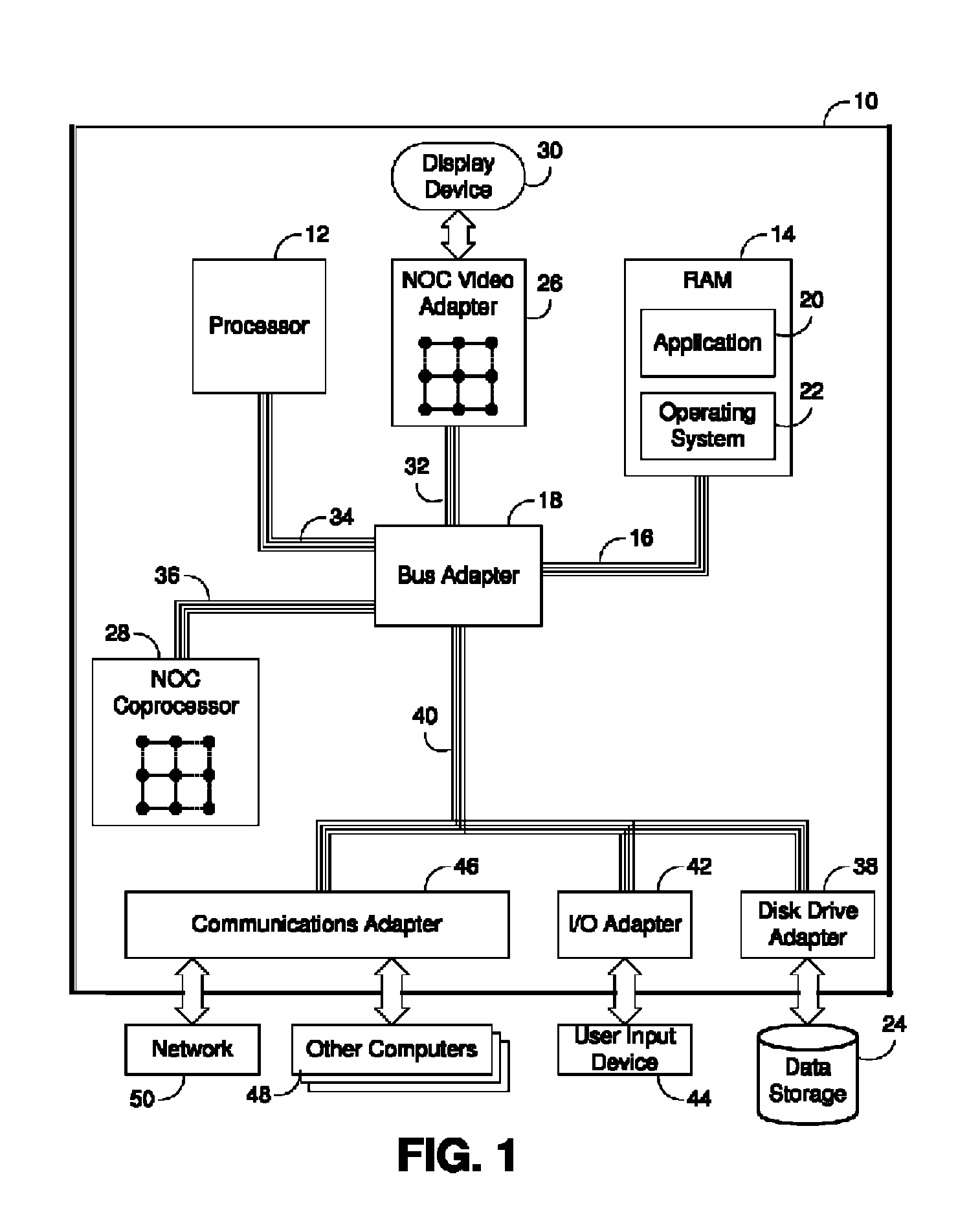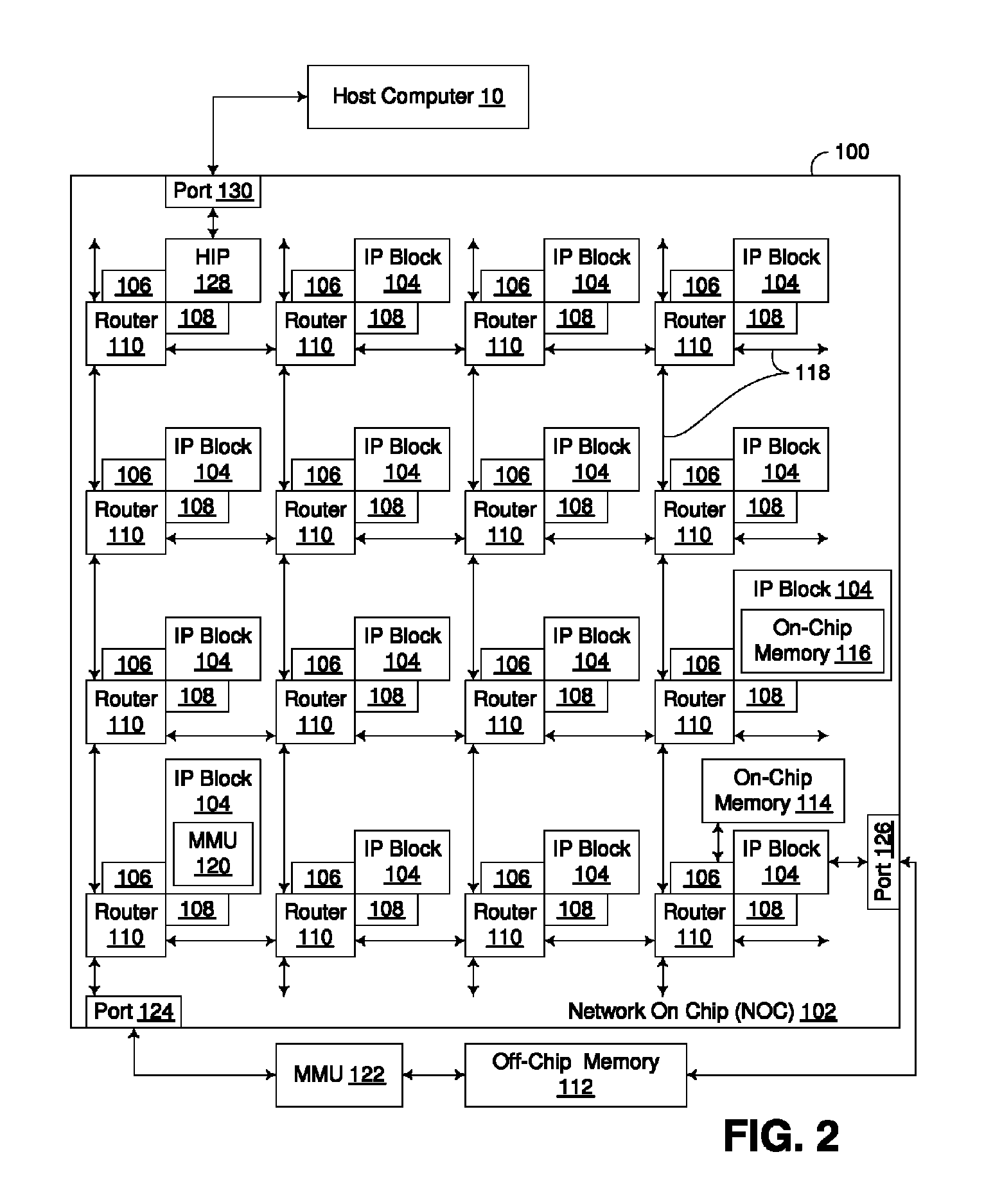Rolling context data structure for maintaining state data in a multithreaded image processing pipeline
a context data and image processing technology, applied in the field of data processing, can solve the problems of low amount of computational power, rasterization suffers from several drawbacks, and modern monitors display images
- Summary
- Abstract
- Description
- Claims
- Application Information
AI Technical Summary
Benefits of technology
Problems solved by technology
Method used
Image
Examples
Embodiment Construction
[0032]Embodiments consistent with the invention utilize a multithreaded rendering software pipeline architecture with a rolling context data structure that is used to store multiple contexts that are associated with different image elements that are being processed in the software pipeline. Each context stores state data for a particular image element, and the association of each image element with a context is maintained as the image element is passed from stage to stage of the software pipeline, thus ensuring that the state used by the different stages of the software pipeline when processing the image element remains coherent irrespective of state changes made for other image elements being processed by the software pipeline. As such, state data in one context that is associated with one image element is typically unaltered responsive to a change made to state data in another context that is associated with another image element during processing of the other image element by the...
PUM
 Login to View More
Login to View More Abstract
Description
Claims
Application Information
 Login to View More
Login to View More - R&D
- Intellectual Property
- Life Sciences
- Materials
- Tech Scout
- Unparalleled Data Quality
- Higher Quality Content
- 60% Fewer Hallucinations
Browse by: Latest US Patents, China's latest patents, Technical Efficacy Thesaurus, Application Domain, Technology Topic, Popular Technical Reports.
© 2025 PatSnap. All rights reserved.Legal|Privacy policy|Modern Slavery Act Transparency Statement|Sitemap|About US| Contact US: help@patsnap.com



